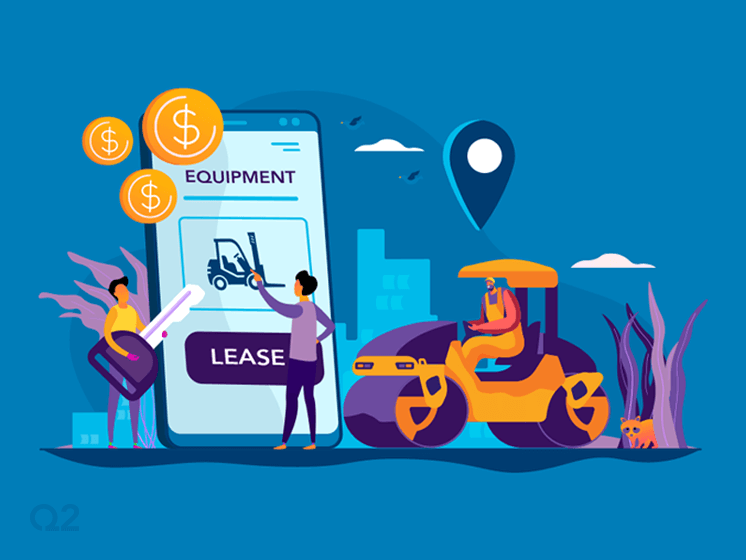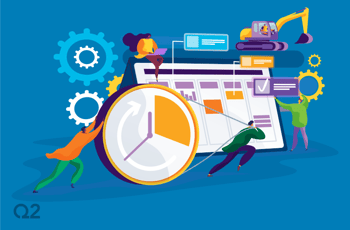The COVID-19 pandemic has forced lessees to rethink and reprioritize equipment leases. With that recalculation has come a significant drive for lower-cost equipment financing, and efforts to digitize and automate lease management have changed the landscape of post-pandemic financing.
For today’s lessees, no cost-cutting opportunity is off-limits; lessors and lenders must be prepared to meet ever-increasing pressure for ways to save. To remain competitive, they must maximize the efficiency of their lease management models.
Mukul Mittal, vice president of industry solutions at Q2’s cloud lending group, says automation is essential, and the COVID-19 pandemic has hastened the demand for it.
Transforming equipment finance into a touchless, streamlined, more efficient operation is not just a matter of allowing the evolution of a business model but, for many lessors, a proactive matter of survival.
“I see the demand for automation growing because it demonstrates its value,” Mittal said. “We have customers who were able to migrate most, if not all, of their systems to the cloud. For these customers, it took just a few hours to make the transition from operating conventionally to operating through a cloud-based model.”
The elements of digital transformation
According to Mittal, complete digital transformation consists of two key shifts: 1) automation and 2) culture. “The culture part is huge,” Mittal said. “It’s difficult enough to make decisions when you have a committee of 20 people sitting at a conference table trying to come to consensus; doing so when they are all working from home is impossible without technology to bridge the cultural gap.” In his ongoing communication with Q2 lending and leasing customers, Mittal has gained a clear view of the technologies and the capabilities they seek.
At a high-level, customers are searching for ways to automate their most labor-intensive lease management tasks. “Every human-touch increases the cost of doing business,” Mittal said. For example, optical character recognition (OCR) leverages technology to scan and input loan application information, eliminating the time-consuming and expensive task of manually consolidating data, transcribing it, categorizing it for interpretation by an intended user, and packaging it in an easily accessible format.
The shift toward automation must scale beyond discreet tasks like OCR to reduce costs and processing times. According to Mittal, today’s changed leasing world requires a wholly new lease management model.
“Ideally, in a vendor space, I want the vendor to be able to put in a lease application through a self-service portal, have it automatically received by the middle office system, which conducts its credit adjudication process, and a decision is made for a yes or no—without anyone physically touching it,” Mittal said. If the lease is approved, lease documents are generated and e-signatures are added. “When it comes back signed, the vendor delivers the equipment, and the lease starts.”
Creating flexible solutions during the pandemic
Q2 has made substantial improvements to the portal side and is focused on providing point solutions to financial institutions, equipment finance companies, and fintech lenders. Everyone is looking for ways to engage their customers better and more effectively. Today, this means developing solutions for the SBA’s Paycheck Protection Program and other loans, as well as the management of loan forgiveness. In response to a growing number of lessees requesting restructuring of their programs, Q2 created an automated solution for managing distressed leases and loans. With the demand for restructured contracts growing significantly in the face of the pandemic, conventional resource management was overwhelming lessors. Restructuring each lease contract manually and individually was virtually impossible, so Q2’s automated solution has enabled restructuring in bulk. Customers can now upload a spreadsheet of contracts to be restructured, and an automated restructuring solution facilitates the restructuring in three or four hours – instead of a manual process that addressed individual cases and lasted several weeks.
Providing solutions such as these, according to Mittal, stressed the importance of collaboration. “Listening to our customers very closely and seeing what we could do to help was key.”
Related Resources:
Dig deeper into the world of vendor finance with our eBook, "Vendor Finance in the New Normal Depends on Digital Transformation."
Download the infographic, "Top 3 Challenges of Vendor Programs."





